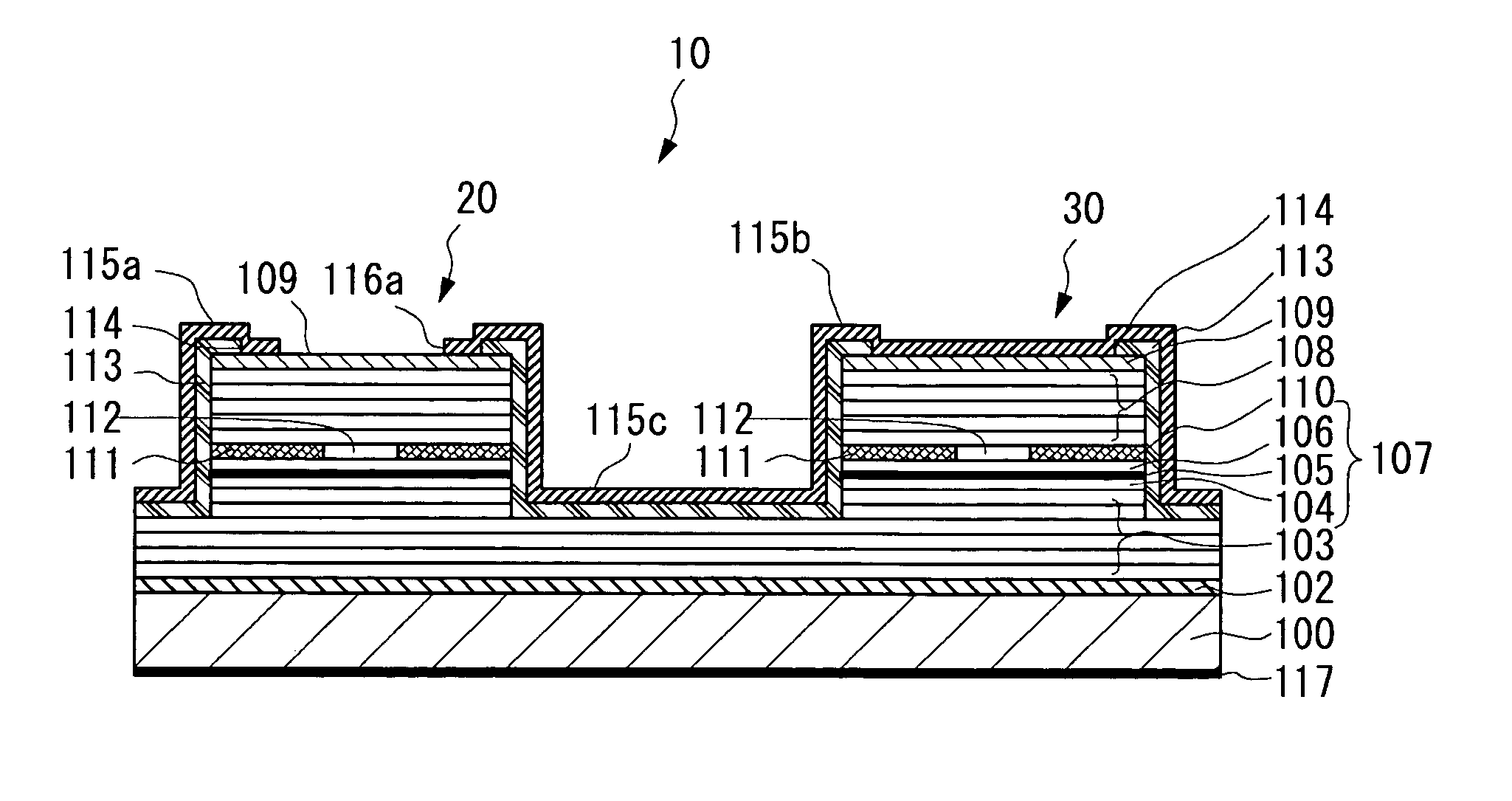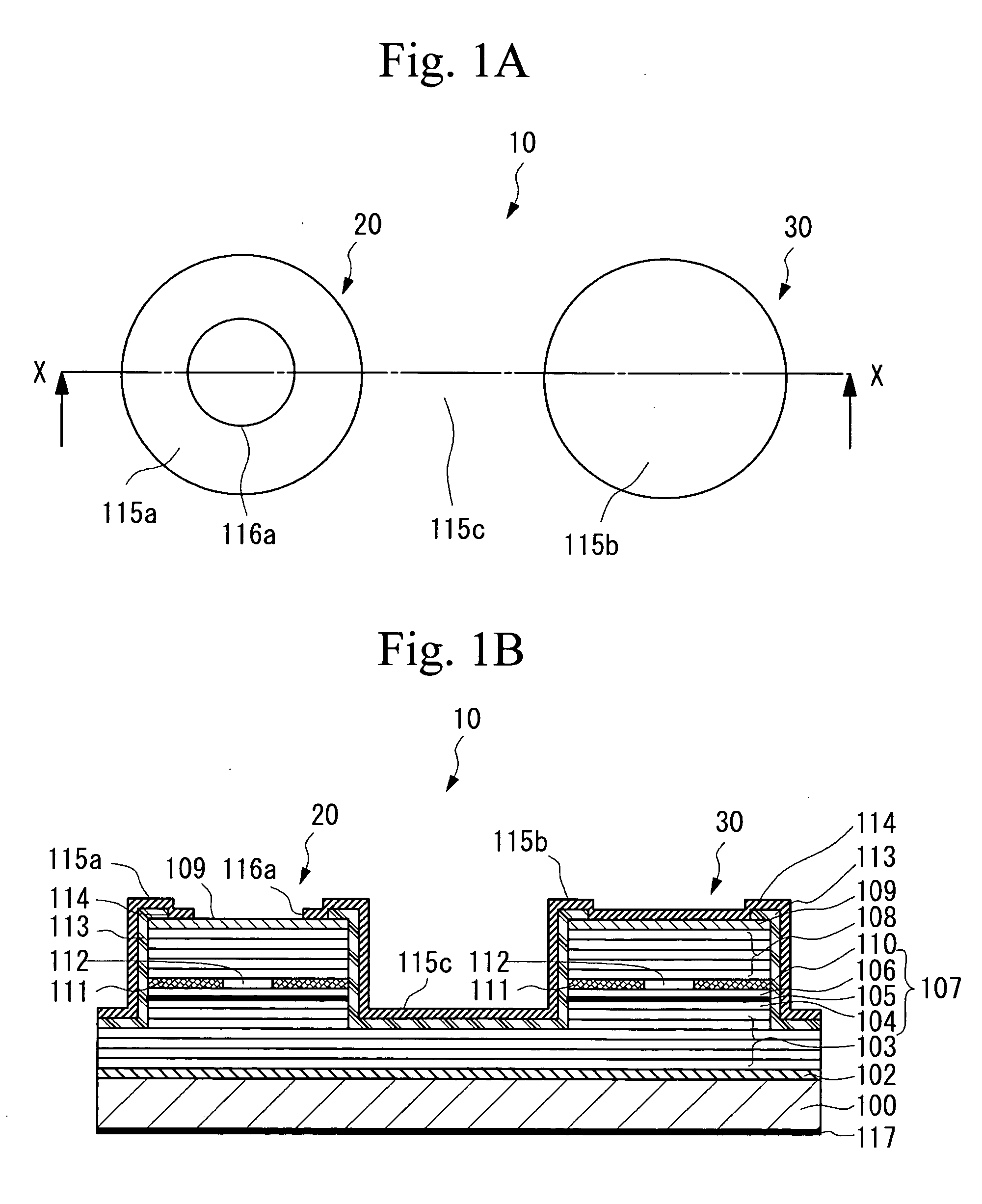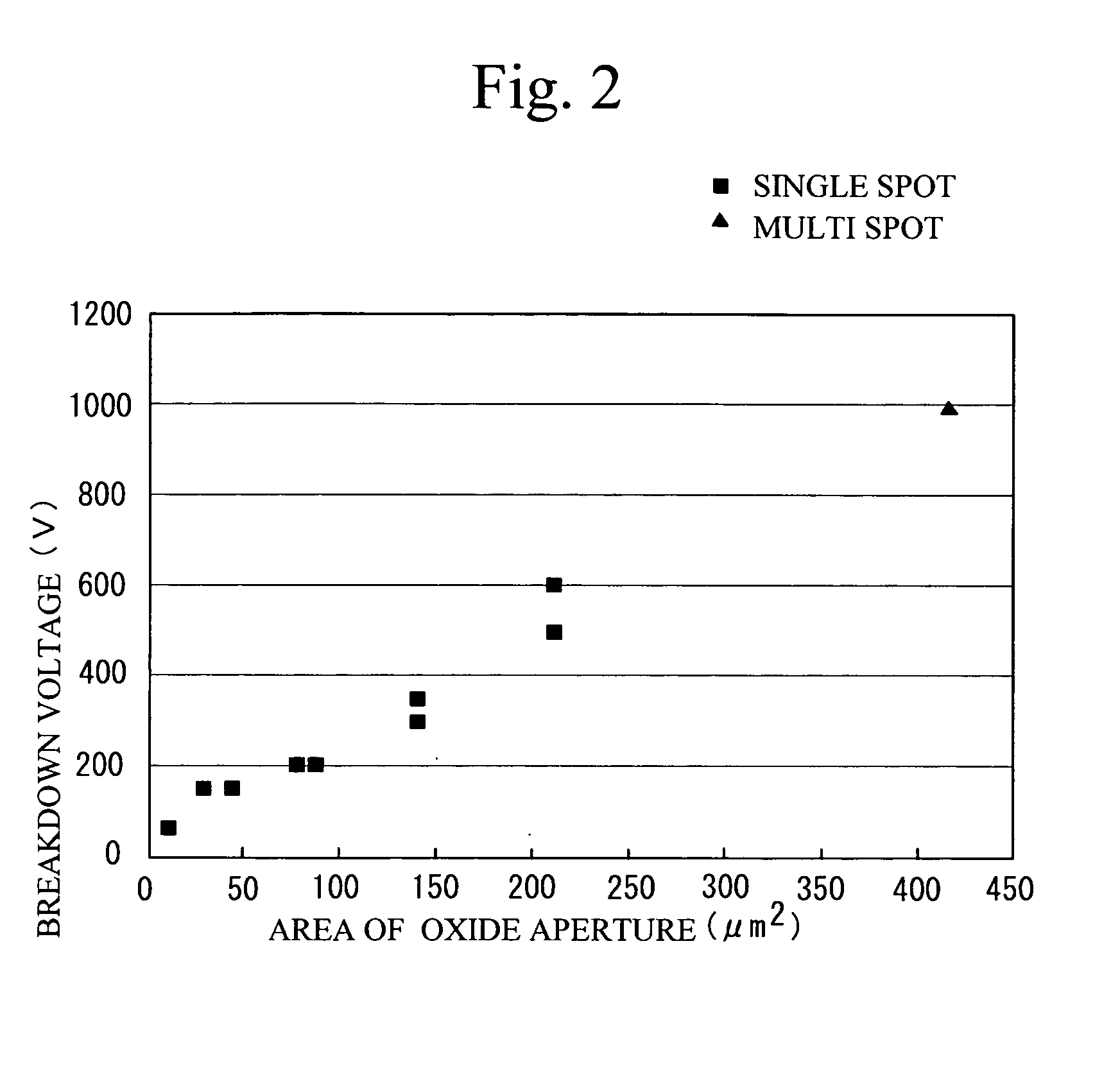Vertical-cavity surface-emitting semiconductor laser
a semiconductor laser and vertical cavity technology, applied in semiconductor lasers, laser details, electrical equipment, etc., can solve the problems of device failure, device deformation, device failure, etc., and achieve the effect of preventing device failure, preventing device failure, and preventing device failur
- Summary
- Abstract
- Description
- Claims
- Application Information
AI Technical Summary
Problems solved by technology
Method used
Image
Examples
first embodiment
[0021]FIG. 1A is a schematic plan view of a VCSEL according to the present invention, and FIG. 1B is a sectional view taken along a line X-X shown in FIG. 1A. A VCSEL 10 according to the present embodiment has a mesa (first mesa) 20 from which laser light is emitted, and another mesa (second mesa) 30 from which no laser light is emitted. The first and second mesas 20 and 30 are formed on a single substrate. The mesa 30 functions as a dummy that does not emit laser light at all, and substantially increases the area of the oxide aperture of the VCSEL 10. It is therefore possible to improve the ESD-induced damage threshold voltage. The area of the oxide aperture of laser light emitted from the mesa 20 can be reduced to, for example, an area for the single mode, so that the fundamental laser characteristics cannot be degraded at all.
[0022] As shown in FIG. 1B, the VCSEL 10 has an n-type GaAs substrate 100, on which provided are an n-type buffer layer 102, an n-type lower DBR (Distribute...
third embodiment
[0035]FIG. 4A is a plan view of a VCSEL according to the present invention. A VCSEL 14 of the present embodiment has a mesa 24 and four mesas 34. The mesa 24 is located in the center of a substrate 100 and has the function of emitting laser light. The four mesas 34, which are shown by broken lines, are arranged in the vicinity of the mesa 24 so as to surround the mesa 24. The mesas 24 and 34 have a cylindrical shape of the same size. The top of the mesa 24 is covered with the p-side metal layer 115a, which has the laser emission aperture 116a. In contrast, the mesas 34 function as current paths, but do not have any laser emission apertures, so that no laser can be emitted from the mesas 34.
[0036] Preferably, the four mesas 34 are arranged on imaginary diagonal lines that pass through the center of the mesa 24, and are positioned at the same distance from the center of the mesa 24. In order to downsize the VCSEL, it is desirable to arrange the mesas 34 as close to the mesa 24 as poss...
PUM
 Login to View More
Login to View More Abstract
Description
Claims
Application Information
 Login to View More
Login to View More - R&D
- Intellectual Property
- Life Sciences
- Materials
- Tech Scout
- Unparalleled Data Quality
- Higher Quality Content
- 60% Fewer Hallucinations
Browse by: Latest US Patents, China's latest patents, Technical Efficacy Thesaurus, Application Domain, Technology Topic, Popular Technical Reports.
© 2025 PatSnap. All rights reserved.Legal|Privacy policy|Modern Slavery Act Transparency Statement|Sitemap|About US| Contact US: help@patsnap.com



